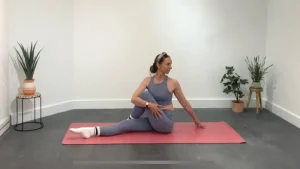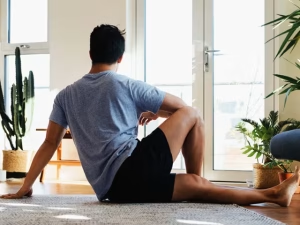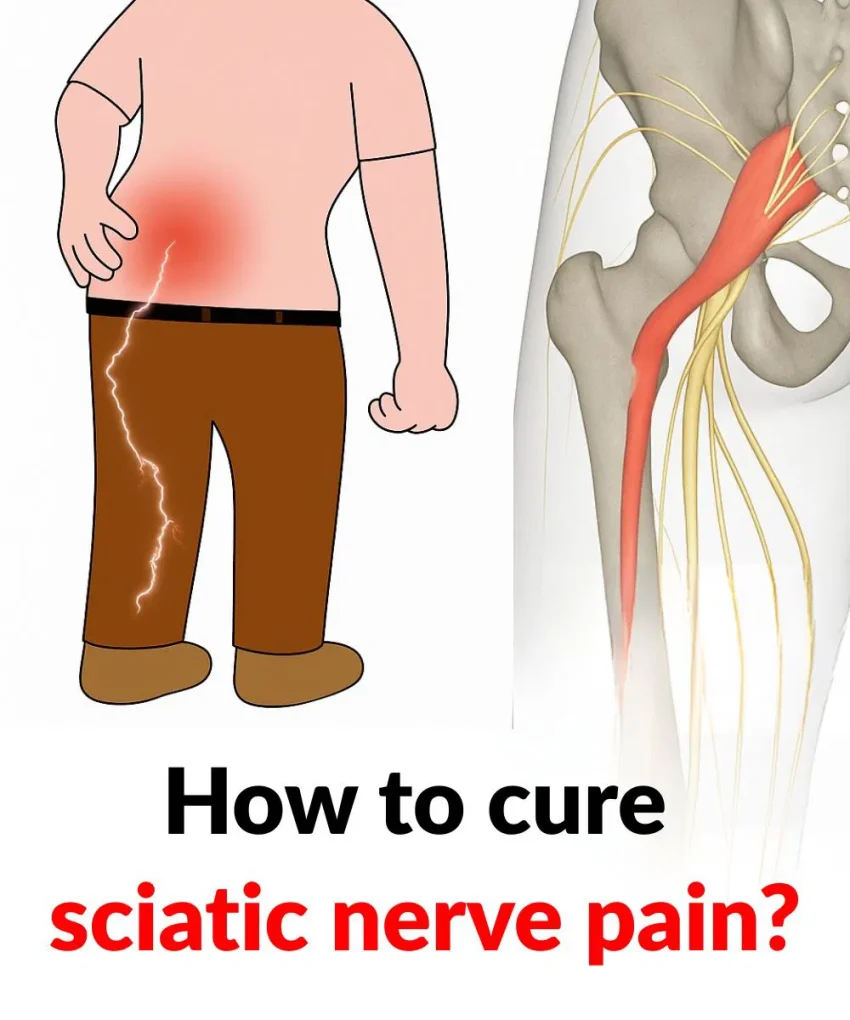One of the most common causes of leg and lower back pain is sciatica. The pain can go from the lower back to the foot and is caused by irritation or compression of the sciatic nerve, which is the longest nerve in the human body. If you suffer from chronic pain and have been advised to do some exercises but are unsure of where to begin, these three easy and secure movements will help ease the ache.
Exercise 1: Stretch your glutes while twisting.

The sciatic nerve is frequently compressed by stress in the gluteal and lower back muscles, which this exercise helps to relieve.
How to accomplish it:
Take a seat on a mat or the floor.
Over the healthy leg, cross the injured leg.
Twist your torso to the other side while holding your knee with both hands and gently pulling it toward your chest.
For fifteen seconds, maintain this posture while taking deep breaths.
Return to the starting position gradually.
As long as it doesn’t hurt, perform this exercise three or four times.
Exercise 2: Hamstring stretch while lying

This exercise is perfect for relieving the tight, shortened back of the thigh that sciatica sufferers frequently experience.
How to accomplish it:
On a comfortable surface, lie on your back.
Bring the affected leg closer to the abdomen.
Gently extend your knee as far as you can without straining it while holding it beneath your thigh.
Repeat the motion by bending once more.
Perform three sets of ten repetitions with a break in between.
Exercise 3: Piriformis stretch while seated

If the piriformis muscle is tight, it may compress the sciatic nerve. The goal of this stretch is to lessen that pressure.
How to accomplish it:
Take a seat on a comfy surface or a solid chair.
As though making a “4,” cross your injured leg over your healthy limb.
Lower your knee softly toward the floor while holding the tip of your foot.
For 15 seconds, maintain this posture without bouncing or exerting any force.
I did the motion three or four times.
Extra advice

Wear comfortable clothes and find a quiet spot to do these exercises.
Throughout the motions, maintain a steady, relaxed breathing pattern.
If you experience significant tingling, weakness, or stabbing pain, avoid performing the exercises.
To notice results, perform these stretches at least three times per week. Consistency is the key.
In conclusion, appropriate, gradual, and careful movements can significantly lessen sciatica, which can feel extremely confining. Starting with these three exercises is a wonderful way to start, always being cautious and paying attention to your body’s cues.
